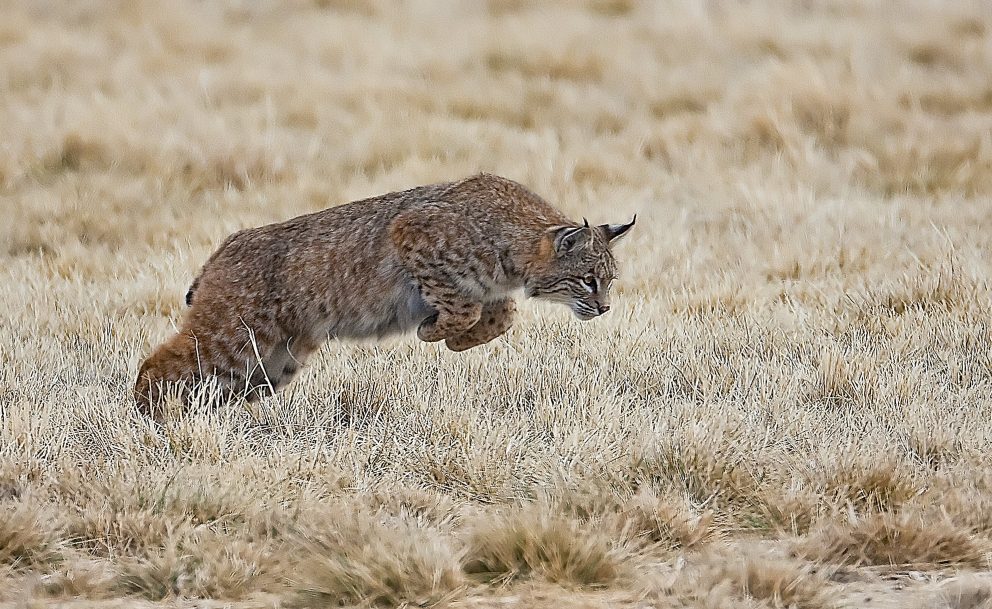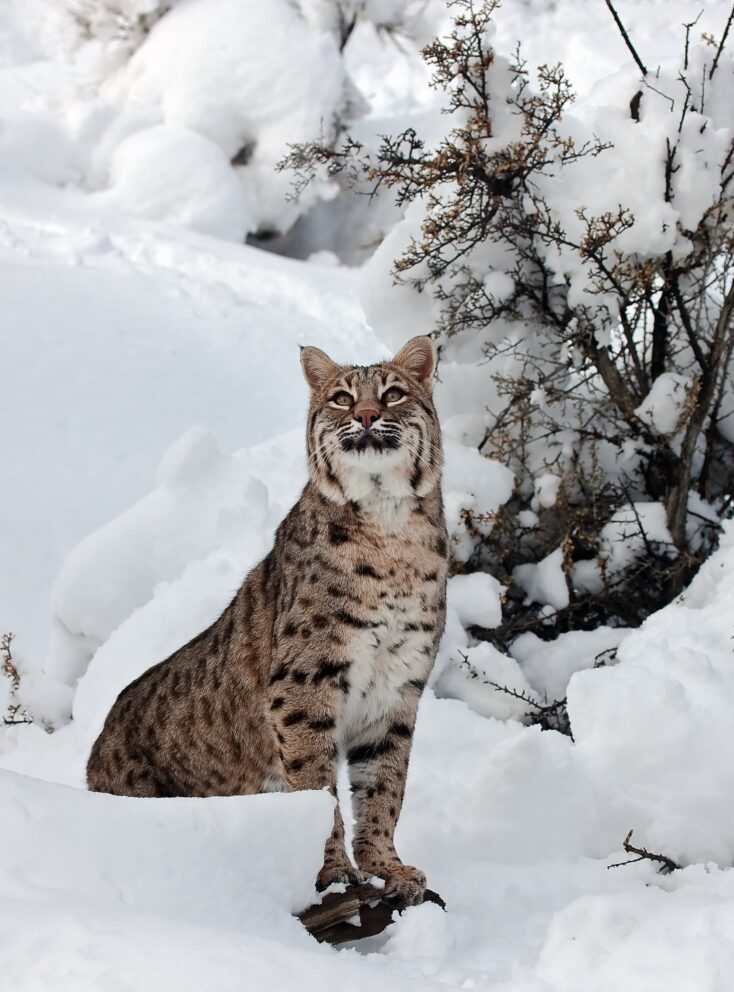- SCIENTIFIC NAME
- Lynx rufus
- CLASSIFICATION
- Mammal
- LIFE SPAN
- 12-13 Years
- SIZE
- 26-41” | 9-33lbs
- STATE CONSERVATION STATUS
-
- State Protected
- FEDERAL CONSERVATION STATUS
- Least Concern
- GAME STATUS
- Game
- GAME TYPE
- Furbearer
- Washoe
- Humboldt
- Pershing
- Churchill
- Mineral
- Lyon
- Douglas
- Carson City
- Storey
- Elko
- Lander
- Eureka
- White Pine
- Esmeralda
- Nye
- Lincoln
- Clark
Habitat & Range
Bobcats thrive in a wide variety of habitat types. Within Nevada, Bobcats typically choose rocky areas with high prey abundance and plenty of coverage. Depending on suitable habitat availability, Nevada residents may spot a Bobcat in their neighborhood!
- Cold desert shrubland and sagebrush
- Grasslands
- Upland Forests
Threats
- Habitat Loss
Natural History
Bobcats are carnivores that hunt rabbits, rodents, ground birds, coyotes, and other small game. They are typically nocturnal, though they can be spotted hunting at dusk and during the day as well. They are solitary animals, typically only seen with other Bobcats during mating season or females with their young. Bobcats breed once yearly and can have one to six young, called “kittens.” Female Bobcats care for their kittens and teach them how to hunt for about a year before the young are on their own.
Fun Facts














